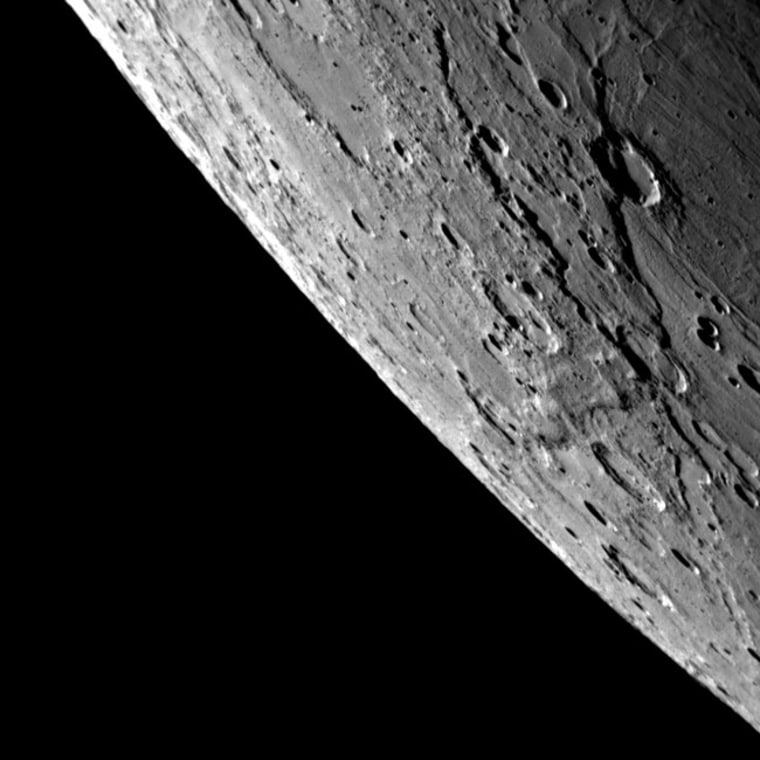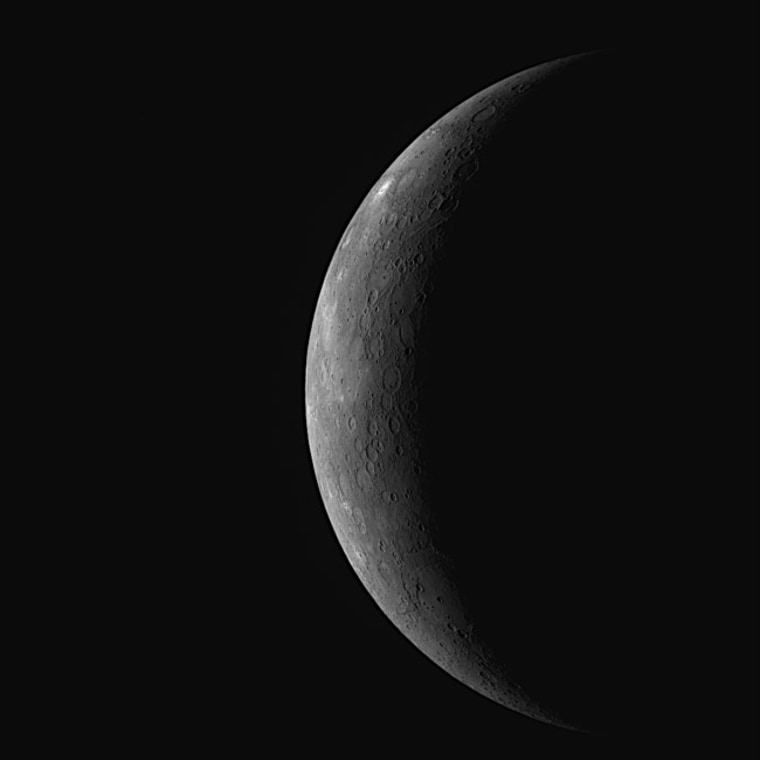A NASA probe has begun beaming back stunning new images from its successful second flyby of Mercury, the planet closest to the sun.
NASA's MESSENGER probe captured never-before-seen views of the Mercury during its encounter on Monday. The spacecraft zipped past Mercury for the second time this year and used the planet's gravity to adjust its path as it continues en route to become the first probe to orbit the planet in March 2011.
One new image shows large patterns of ray-like lines extending southward across much of the planet surface from a young, newly-imaged crater. The previously-imaged Kuiper crater and others craters also have similar webs of lines radiating outward.
Another raw picture represents the highest-resolution color image ever taken of Mercury's surface, and came just 9 minutes after the spacecraft's closest approach to Mercury at 4:43 a.m. EDT (0845 GMT).
Details include a large impact basin with an 83-mile (133-km) diameter, named Polygnotus for a Greek painter from the 5th century B.C.

Yet a third first-time image came from MESSENGER's approach to the crescent-shaped Mercury, and is one of 44 pictures taken as part of a mosaic.
Scientists hoped to collect nine image mosaics total in order to add up to 30 percent of never-before-seen regions of the planet's surface.
The second Mercury flyby of Oct. 6 comes after a first flyby on Jan. 14, which looked at a different side of the planet.
Launched in August 2004, MESSENGER — short for MErcury Surface, Space ENvironment, GEochemistry, and Ranging — is the first spacecraft in 33 years to greet Mercury up close since NASA's earlier Mariner 10 mission of the 1970s.
The new probe is slated for a third Mercury flyby in 2009 before finally settling into orbit on March 18, 2011. MESSENGER's $446 million mission is expected to spend about a year studying Mercury.
